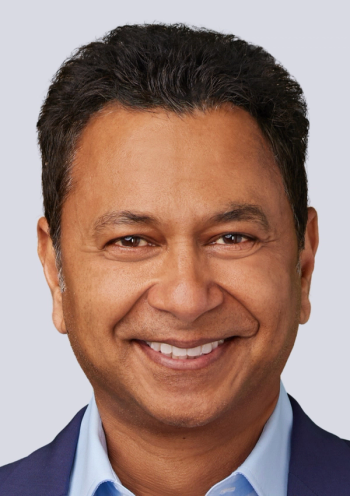
- MHE September 2022
- Volume 32
- Issue 9
AI Brings New Opportunities for Patient Financial Navigation
The confusing, data-intensive world of getting help with medical bills has become a fertile territory for software developers.
When patients need help paying for high-cost medical treatment, they face a good news/bad news scenario.
The good news is that drugmakers, private foundations, government agencies and others have myriad programs that can help many if not all. The bad: Actually getting the assistance can be a confusing, time-consuming process, even for professionals.
“You have to track it in Excel spreadsheets,” says Zinkeng Asonganyi, Pharm.D., director of ambulatory pharmacy operations at The University of Texas Medical Branch in Galveston. The spreadsheets can help keep track of when a patient applies, whether they get approved and whether the approval is temporary or expires. “Some people use Microsoft Teams to set reminders,” says Asonganyi, “but it just gets crazy.”
Part of the reason it gets so crazy, explains Ethan Davidoff, CEO of Atlas Health, a financial navigation software maker in Seattle, is that enrolling patients in assistance programs is just the first step. “Where the workflow is very, very complex is actually after you enroll the patient — automating all the back-office claims, the moving of money, the ordering of drugs, the moving of drugs, the compliance,” observes Davidoff. “All of that stuff is a lot of complex work, and it’s partly because there is no formal standardized electronic interchange for claims to financial aid programs.”
Atlas Health is one of a growing number of startups using artificial intelligence (AI) to automate aspects of patient financial navigation. Davidoff notes that about $30 billion in potential philanthropic healthcare aid goes unclaimed each year. That’s a number Atlas and other firms are hoping to drive down.
Antidotes to financial toxicity
The problem of healthcare costs burdening patients and the efforts to relieve that burden are relatively new phenomena, observes Davidoff. Over the past 15 to 20 years, healthcare costs have shifted to patients because of high-deductible health plans and increasing prices that make formerly affordable coinsurance amounts unaffordable for many people. Meanwhile, a flood of effective but expensive drugs has hit the market.
Help is available, but it is a maze. Drug companies have created patient-assistance programs, recognizing that covering patient out-of-pocket cost is a relatively minor expense if it can boost sales.
Dan Sherman, a longtime financial navigator who consults with health systems and other industry clients, says hospitals have a wide range of approaches to help patients deal with the cost of care. “You can go into one hospital system, and they will say, ‘We give charity to people, that’s our financial navigation,’” he says. Another might simply connect patients with copay assistance programs. The optimal approach, Sherman says, is for healthcare organizations to partner with patients to ensure patients get the resources they need.
“What I do — and what I train hospital systems to do — is a much more sophisticated approach to financial navigation or to addressing financial toxicity,” says Sherman, president of the NaVectis Group, a financial navigation company in Grand Rapids, Michigan.
For Sherman, “toxicity” in financial toxicity isn’t just a metaphor. Patients with complex (and expensive) diseases like cancer face high medical bills and the loss of work. Government benefits can help, but those funds can take months to arrive. In the meantime, patients must make tough financial decisions.
“They’re making choices: I’m not going to take that pill, or I’ll take it every other day,” he says. “Or I’m not going to go and have that extra MRI because I can’t afford the $2,000 copay that’s going be associated with that.”
In the end, he says, all those difficult decisions translate into higher rates of psychological stress and often depression and anxiety.
Pulling data together
Vince King, chief commercial officer at TailorMed, another maker of AI-enhanced financial navigation software, says his company’s aim is to help health systems be proactive with financial assistance. TailorMed, which has a U.S. headquarters in New York, starts by analyzing a health system’s insurance networks and prescriptions to identify programs that might be a good fit, explains King. “Then we proactively look at their patients to prioritize those patients based on the opportunity for assistance and then populate work queues and workflows in order to make those teams more efficient ... to give them the right patients to focus on at the right time.”
King says TailorMed’s AI-based approach can help identify patients who are more likely to benefit from assistance programs based on their insurance, diagnosis, social determinants of health and other factors.
One reason this type of AI approach works is that so much of a patient’s data is siloed in different software or departments, King says. By pulling all the data together into one place, financial navigation software can make better suggestions and also export those data faster. “We’re fortunate that we get a pretty robust data set from the get-go,” he says.
Some manufacturers have embraced TailorMed’s products, resulting in “one click” enrollment, King says. “And we're talking to other pharma manufacturers to make that list grow,” he adds.
TailorMed is also pushing into insurance optimization — helping people make the right decisions about which insurance coverage to buy.
Sherman, the financial navigator and consultant, says insurance optimization is a crucial first step in weathering the costs of healthcare. “In the world of Medicare, most people have 30, 40 or 50 different choices,” says Sherman, who has consulted for TailorMed. Most patients make the wrong choice, he adds. “What I can do depends on the scenario and what's available, but if you just have true expertise in the Medicare system, you can drastically reduce the patient’s (financial) responsibilities.”
Sherman says the same is true for people buying on the Affordable Care Act exchange. It is not uncommon, he says, to reduce a patient’s obligation from something in the range of $7,000 to just a few hundred dollars.
The human element
Davidoff says Atlas Health’s approach is to not only provide software, but also partner with providers to essentially become their financial navigation departments, if needed. “So we don’t just provide the technology, but in many cases, we provide the people,” he notes.
One question raised by these new technologies is whether patients might one day be able to navigate assistance programs without the need for help from professionals. Both King and Davidoff say they see patient-facing navigation tools on the horizon. In fact, King says TailorMed already has patient-facing pilot projects underway. However, King says he does not expect human patient navigators to become obsolete.
Although AI tools can dramatically improve the process of financial navigation, in King’s view, human patient navigators bring more than just knowledge.
“There’s a lot of burnout in patient navigation,” he says. “It takes a lot of coordination, a lot of advocating for the patient.” Perhaps patient-facing tools could help patients identify resources and streamline case coordination.
“And that’s great,” adds King. “But you know, this work is really performed by the organization, the clinic, the health system so they can be able to provide that care. A lot of people don’t even know all of these resources exist.”
Jared Kaltwasser is a freelance writer in Iowa and a regular contributor to Managed Healthcare Executive®.
Articles in this issue
about 3 years ago
Emerging Industry Leaders: Joyce Chan Russell of Priority Healthabout 3 years ago
Emerging Industry Leaders: Mairéad McInerney of AmeriHealth CaritasNewsletter
Get the latest industry news, event updates, and more from Managed healthcare Executive.


















































